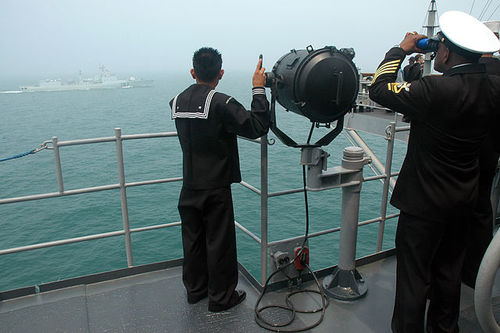Far, far away?
 If you have not done the
previous set
, I recommend you do it first.
If you have not done the
previous set
, I recommend you do it first.
Once we have the concept of synchronized clocks and a definition of how to relate the time coordinates of observers at different points we can define a distance. Let's choose a region of space with a family of observers moving through it, all with clocks synchronized by sending light pulses back and forth. Before when dealing with time we used the variable for Finn's time and for Aaron's time. Since we now have synchronized clocks, we can define a variable as the coordinate time which is a valid, well defined coordinate everywhere in the region of interest.
Consider the scenario where Finn and Aaron are communicating with light pulses. At time , Finn sends a light pulse to Arron, who reflects is back, and is received by Finn at time . Which of these is a possible definition for the distance between Finn and Aaron?
This section requires Javascript.
You are seeing this because something didn't load right. We suggest you, (a) try
refreshing the page, (b) enabling javascript if it is disabled on your browser and,
finally, (c)
loading the
non-javascript version of this page
. We're sorry about the hassle.
First of all notice that x = t 1 is not true. Because on that case, if Finn sent a light pulse 5 minutes later, the distance would increase.
Similarly, x = t 2 can't also be true. Because on that case , if Finn had sent a light pulse 5 minutes earlier, the light pulse would return 5 minutes earlier and the distance would decrease.
Same goes for, x = 2 t 1 + t 2 .[ If Finn had sent it x minutes earlier or later the distance would decreased or increased x ]
Now, let's examine the option x = 2 t 1 − t 2 . On this case distance is independent to when the event occurs. So, this is our answer.
Also, notice that d i s t a n c e = v e l o c i t y Δ t i m e . On this case v e l o c i t y is just considered as 1 . So, this indeed our answer.